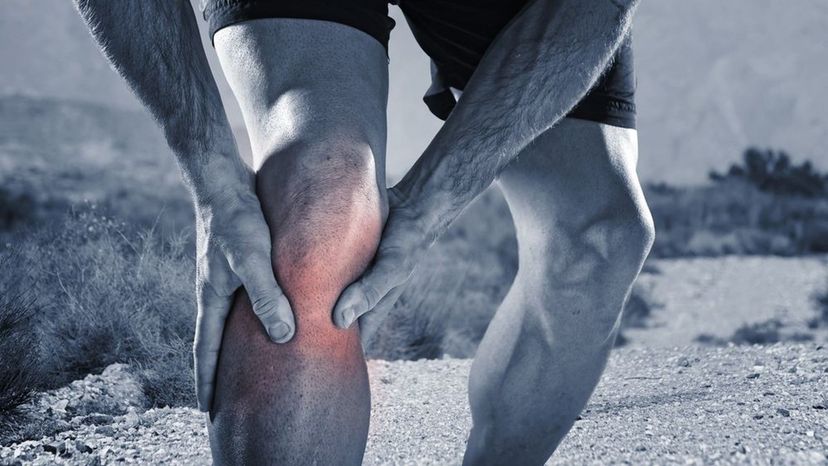
About This Quiz
Understanding what disease someone has can be confusing. There are many different symptoms. However, some symptoms are relatively well known. Try this quiz to see if you can match the symptoms to the disease.Spots, rash, and fever are signs of measles. Measles is caused by a virus, and it is contagious.
Constant and severe pain on the lower right-hand side of the abdomen indicates appendicitis. Appendicitis can be a life-threatening emergency and requires immediate surgery.
Fever, mouth ulcers, and rash are signs of hand-foot-and-mouth disease. This disease is most common in children under 10.
Advertisement
Gas, vitamin B12 deficiency, and gluten intolerance may signal celiac disease. People with celiac disease must not eat gluten.
Redness and inflammation of the thin layer of tissue over the front of the eye is conjunctivitis. Conjunctivitis might also be called pink eye.
Rash, swollen glands, fever are signs of Rubella. Rubella is also known as the German Measles.
Advertisement
Itchy spots that turn into fluid-filled blisters indicates Chickenpox. Chickenpox is infectious until all of the blisters have crusted over.
Nausea, vomiting, and diarrhea? Sounds like you might have food poisoning. Be careful what you eat!
Sneezing, rash, and tongue swelling are all signs of allergies. The severity of your reaction to allergans typically depends on what you're allergic to.
Advertisement
Joint pain and inflammation are both signs of arthritis. Arthritis typically affects people over the age of 40.
Itchy, dry, cracked, sore, and red skin might signify eczema. Eczema might be a type of allergy, but doctors aren't exactly sure.
Shortness of breath, wheezing, and hacking cough are all signs of bronchitis. Bronchitis is generally worse in the winter months.
Advertisement
Pain, swelling, and tenderness near the joints indicates bursitis. Unlike arthritis, the joints aren't actually affected. Instead, bursitis is the inflammation of a sac over the joints.
Loss of appetite, nausea, itchy skin, and jaundice are all signs of cirrhosis. Cirrhosis occurs when healthy liver tissue is replaced with scarring.
Abdominal pain, weight loss, and loose stools are all signs of Crohn's disease. Some people with Crohn's may also experience ulcers in the mouth and a high fever.
Advertisement
Frequent chest infections, constant inflammation of the airways, and coughing are all signs of cystic fibrosis. Cystic fibrosis is inherited.
Constant thirst and high blood sugar are signs of diabetes. There are two kinds of diabetes: type 1 and type 2.
Dehydration, low blood pressure, and hyperpigmentation may be signs of Addison's disease. This is a disorder of the adrenal glands, and President John F. Kennedy suffered from it.
Advertisement
Bark-like cough, difficulty breathing, and a harsh sound when inhaling are all signs of croup. Croup is a childhood illness and can be life-threatening.
Although pain, fatigue, and muscle stiffness can signify numerous disorders, in this example they signify fibromyalgia. Fibromyalgia occurs more often in women than in men.
Memory lapses, confusion, and hallucinations may signal Alzheimer's disease. Doctors aren't exactly sure what causes Alzheimer's.
Advertisement
Heartburn, acid reflux, and a sore throat are signs of Gastroesophageal reflux disease, or GERD. GERD may be serious but can usually be treated with over-the-counter medications.
Hot and tender joints, swelling, and red and shiny skin are all signs of gout. Gout is a type of arthritis.
Red sores around the mouth and nose are signs of impetigo. In severe cases, signs might also include fever and swollen glands.
Advertisement
Blotchy rash, high fever, and light sensitivity are all signs of meningitis. Meningitis can be life-threatening.
Swelling at the sides of the face, fever, and joint pain are signs of mumps. Mumps is not common because most children are vaccinated against it.
Red, flaky, crusty patches of skin covered with silvery scales signals psoriasis. Doctors think that psoriasis is a problem with the body's immune system.
Advertisement
Red and burning skin on the face might mean rosacea. Rosacea can be treated, but there is no cure.
Rash, fever, sore throat, and a white coating on the tongue are signs of scarlet fever. The rash looks like a sunburn, which gives the disease it's name.
Pain, fever, and rash are all signs of shingles. Shingles are caused by the same virus that causes chickenpox.
Advertisement
"Face, Arms, Speech, Time" can be remembered by the acronym FAST. If the face droops, if an arm gets numb or weak, or if speech becomes difficult, it's time to call 911.
Wheezing, shortness of breath, and chest tightness are signs of asthma. Doctors aren't entirely sure what causes asthma.
Abdominal pain, jaundice, and fever are all signs of gallstones. Gallstones are small stones in the gallbladder that are made of cholesterol.
Advertisement
Inhales that sound like a "whoop" between coughing are signs of whooping cough, which is also known as pertussis. Pertussis is not common, as we vaccinate against it.